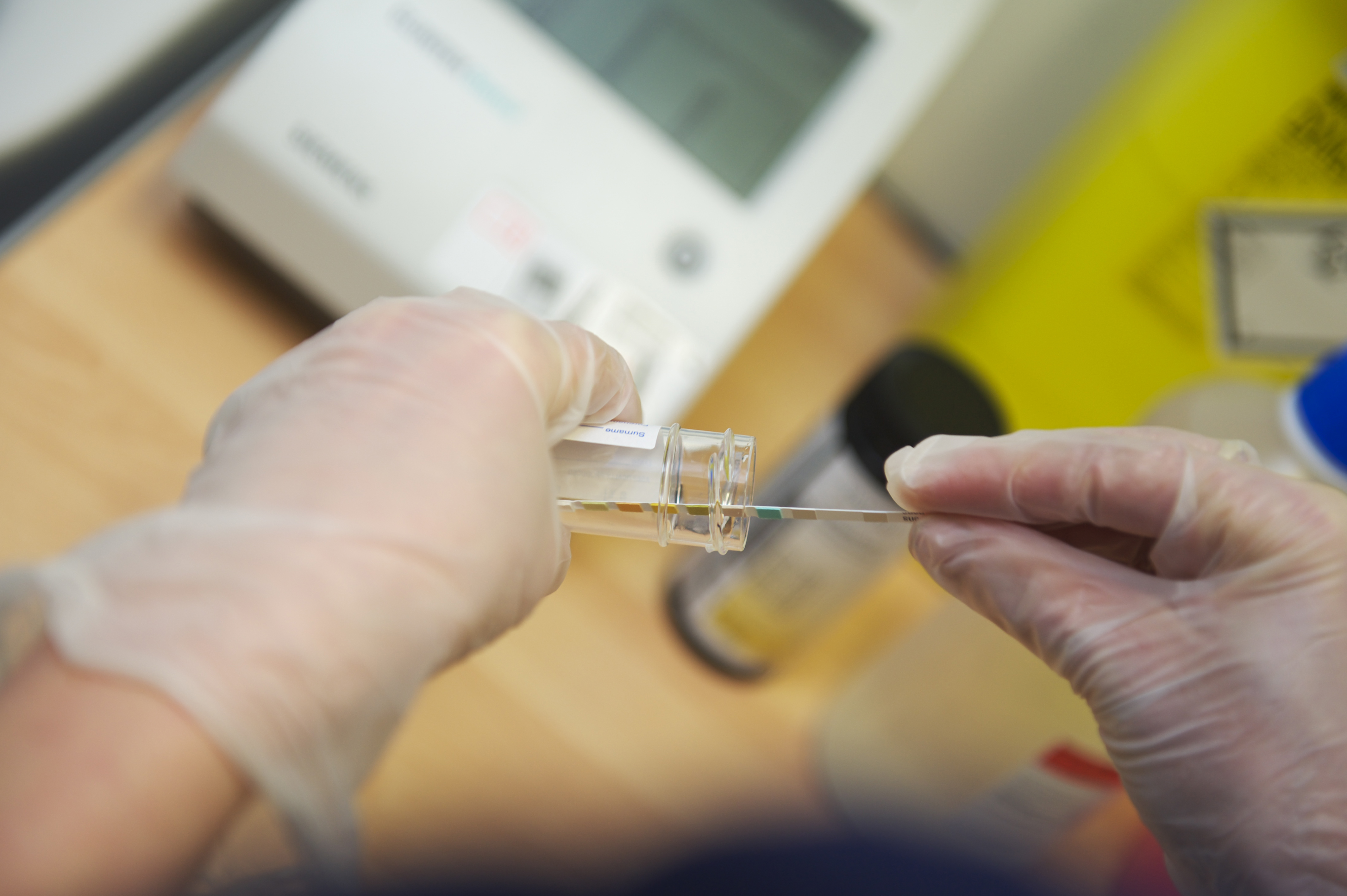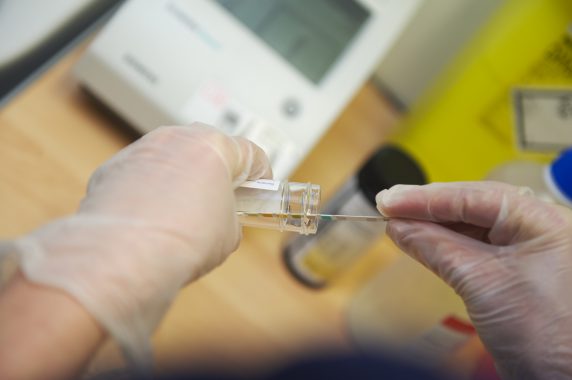
A 26-year-old postman presents at his general practice with a three-month history of right testicular pain, which is associated with intermittent exacerbations and has become so unbearable over the past week that it is affecting his ability to work. He has no history of trauma or no urinary symptoms. He also states that he is in a long-term relationship, always has used a condom and has no urethral symptoms or signs. He is anxious that he has testicular cancer, having looked up the symptoms online.
Definition
The term ‘chronic scrotal pain’ is often used synonymously with chronic testicular pain, orchialgia, orchidynia and is part of the spectrum of symptoms best described as chronic pelvic pain syndrome. Specifically, orchialgia refers to a chronic testicular pain of unknown cause, either intermittent or constant, that may be unilateral, bilateral, or felt in the abdomen or pelvis. The pain is described to last for three months or more and interferes with the patient’s daily activities of living.1,2 Chronic scrotal pain is best differentiated from other causes of chronic pelvic pain by the worsening of pain on focal testicular palpations.
Prevalence
Men with chronic scrotal pain represent a small number of patients evaluated in primary care, but the impact on quality of life, social life, sexual satisfaction and ability to work can be substantial. The true prevalence is not known and the only detailed information we have is on post-vasectomy pain. Retrospective studies show that chronic scrotal pain is seen in 15-19% of patients who have undergone vasectomy.3,4
Aetiology
Causes for chronic scrotal pain can be characterised into scrotal (testicular, epididymal/spermatic cord – including post-vasectomy), extra-scrotal (urethral/prostatic, referred pain) or idiopathic.
Scrotal causes include:
- Testicular pathology that can be due to acute or chronic infection.
- Tumour – 20% present with testicular pain.
- Intermittent testicular torsion.
- Hydrocele.
- Spermatocele.
- Inflammation (such as granulomatous disease).
- Trauma.
- Previous surgery.
Causes specific to the vasa and cord include epididymitis cysts, varicoceles, hernia, and post-vasectomy pain, with or without sperm granuloma.
Extra-scrotal causes are referred pain or primary pathology outside the scrotum that then leads to local inflammation. Pain can be referred from hernia repair, benign prostatic hyperplasia (BPH), acute and chronic prostatitis, or urethral stricture. Ureteric colic can be referred to the scrotum, as can radiculitis and bowel disease. More rarely, entrapment neuropathies of the pudendal nerve from tendonitis or gluteal fibrositis or deeper pelvic pathology such as iliac artery aneurysms can result in referred scrotal pain.
Post-vasectomy chronic scrotal pain requires special mention in that it affects up to a fifth of cases and in 5 to 10% represents a significant problem. The mechanisms of pain are thought to occur from two main pathophysiologies – chronic vasal obstruction or sperm granuloma.
In a large proportion of patients, the underlying cause of their pain remains undefined and up to 50% of patients may ultimately be classified as idiopathic.2
Clinical assessment
Clinical history and examination will provide considerable insight into the underlying diagnosis and help exclude differential diagnoses. Of particular note, as discussed above, focal tenderness in the testicle or in the scrotal contents are central to the assessment of the etiology of chronic scrotal pain. Scrotal examination is performed both standing up and lying down. This helps demonstrate the presence of varicoceles and hernia, and can be further examined for using the Valsalva maneuver. If there are any masses in the scrotum, the key finding is to see this confined to the scrotum, and therefore arising from scrotal contents or is an inguinoscrotal hernia. This is simply done by seeing if you can get above the mass in the scrotum. The history and examination will help categorise scrotal and non-scrotal causes, and common clinical scenarios are outlined below.
Although uncommon, it is important to stress that a considerable proportion of testicular tumours can present with pain, and this must not be missed, so scrotal ultrasound is mandatory in the assessment of scrotal pain, either with or without a palpable mass. Of note, a history of relatively trivial trauma can alert patients to an underlying testicular neoplasm, and this may be related to hemorrhage into the tumour.
Chronic orchitis or epididymitis is characterised by tenderness and often swelling of the testis. Even if this is the diagnosis, there still may be a history of sexually transmitted diseases, lower urinary tract symptoms (LUTS) or UTI that should be explored. Non-inflammatory causes are seen as part of the chronic pelvic pain syndrome. Prostatitis as differential diagnosis is often associated with ejaculatory pain and tender palpation on rectal examination.
Intermittent torsion of the testicle may also present as chronic scrotal pain, and is associated with acute episodes exacerbations of pain. Clinical exams may show ’clapper bell’-type testes with a horizontal lie, and worryingly there may even be evidence of atrophy. To avoid an acute non-resolving episode of torsion, urgent referral to urology for surgical fixation is advised.
Hydrocele or epididymal cysts show a smooth mass that is fluctuant. In larger collections of fluid, it becomes difficult to discriminate between hydrocele or epididymal cysts and an ultrasound scan is advised. Large fluid collections render the testicle impalpable, and hydroceles may be associated with an underlying tumour that underlines the importance of an ultrasound in the assessment of scrotal masses.
Pain following vasectomy is common and the history usually gives the diagnosis, supported by tenderness in the epididymis or even a tender sperm granuloma at the surgical site.
Varicoceles are associated with a dragging pain, which is often worse at the end of a day. A diagnosis for these are best demonstrated while the patient is standing or by performing the Valsalva manoeuvre, where they may be visible through the scrotal skin or palpable like a ‘bag of worms’.
Investigations
Urine Analysis
Dipstick analysis should be undertaken, and, if positive for haematuria (with or without nitrites), formal microscopy and culture. On the whole these investigations are negative in patients with orchitis, epididymitis and prostatitis, but when present they can help support an inflammatory or infective basis.
Ultrasound of testes
This is central to the assessment of these patients, and provides a diagnosis or helps exclude significant pathology from within the scrotum.5 In patients with LUTS or a suspected infective cause from the urinary tract, an ultrasound of the urinary tract that includes a post-void residual is indicated.
Other imaging
In cases where urinary tract stones or other intra-abdominal pathology is suspected, CT is the investigation of choice. In instances where radiculitis is suspected, MRI can be undertaken, but although MRI has been advocated for the assessment of equivocal ultrasonography findings, it is rarely used for this indication and theses cases are best referred to local urology services for further management.
Treatment
Treatments are based on the findings of the above investigations, particularly with evidence of focal pathology.
Non-surgical treatment
Application of the WHO analgesia ladder should start with simple treatment, taking paracetamol or an NSAID – if patients are not already – and escalating treatment as indicated. In cases where chronic infection or inflammation is suspected, then antibiotic treatment with doxycycline and quinolones that have the highest penetration into the target tissue should be given for up to four weeks. In refractory cases with no measurable or reversible pathology and a suspected diagnosis of chronic pain syndrome, antidepressants such as amitriptyline can help to reduce neuropathic pain. Nerve blocks as a single injection or in a series have also been used as a form of treatment, with or without steroids, in an effort to break the pain cycle.6
Surgical treatment
Surgical intervention is usually indicated as a last resort, as efficacy is uncertain and there remains the risk of harm. A number of surgical strategies have been described.
In cases of post-vasectomy chronic scrotal pain, obstruction or congestion of the vas deferens or in the epididymis is thought to be contributing factor, and reversal with vasovasostomy or vasoepididymostomy can improve symptoms in approximately two-thirds of cases. However, this procedure also undoes the sterilisation process. The formation of spermatic granulomas post-vasectomy is thought to allow decompression of the vas deferens and epididymis, and helps reduce pain.7 But contradictory reports suggested that sperm granulomas are also intensively painful in 40% of cases.8 In these cases, epididymectomy could be considered with varying success rates, and tend to do better in the presence of epididymal cysts, showing a 43% versus 92% pain relief rate respectively.9
Surgical denervation of the spermatic cord can be undertaken irrespective of the exact aetiology, using a micro-surgical approach in those patients who had a normal scrotal ultrasound and relief of symptoms from local anesthetic nerve block. There is complete pain relief in 76% and partial relief of pain in 9.1% of patients.10 The technique described involves the division of the ilioinguinal nerve and its branches. The vas deferens is also divided, even in the case of previous vasectomy, to eradicate sympathetic innervation and the possibility of reflex sympathetic dystrophy.
Rarely, patients who remain refractory to the measures outlined can be considered for orchiectomy for pain relief. The inguinal approach provides better rates of symptom improvement compared with the scrotal approach – a 73% and 55% improvement in pain relief, respectively.2 Of course, there remains a risk that the symptoms do not improve, and in cases of bilateral chronic scrotal pain, bilateral orchidectomy would have significant consequences to testosterone levels.
When to refer
An assessment with history, examination, urine dipsticks and culture, and ultrasound provides a diagnosis in a large portion of cases. However, cases refractory to simple treatment measures can be referred to urologists for further management. Any male presenting with a suspicious mass, either palpable or radiologically identified, requires urgent urology referral as part of the NHS two-week cancer referral pathway.
Dr Rakesh Heer is a consultant urologist at the Freeman Hospital in Newcastle upon Tyne
Lynsey Robson is lead nurse of the urology testicular clinic at the Freeman Hospital in Newcastle upon Tyne
References
1. Devine Jr CJ, Schellhammer PF. The use of microsurgical denervation of the spermatic cord for orchialgia. Trans Am Assoc Genitourin Surg, 1978;70:149–51.
2. Davis BE, Noble MJ, Weigel JW et al. Analysis and management of chronic testicular pain. J Urol, 1990;143:936-939
3. McMahon AJ, Buckley J, Taylor A, et al. Chronic testicular pain following vasectomy. Br J Urol, 1992;69:188-191
4. Ahmed I, Rasheed S, White C, Shaikh NA. The incidence of post-vasectomy chronic testicular pain and the role of nerve stripping (denervation) of the spermatic cord in its management. Br J Urol, 1997;79:269-70
5. Lau MW, Taylor PM, Payne SR. The indications for scrotal ultrasound. Br J Radiol, 1999;72:833–7
6. Kumar P, Mehta V, Nargund VH. Clinical management of chronic testicular pain. Urol Int, 2010;84:125-31
7. Silber SJ. Vasectomy and vasectomy reversal. Fertil Steril, 1978;29:125–40
8. Schmidt SS. Spermatic granuloma: an often painful lesion. Fertil Steril, 1979;31:178–81
9. Padmore DE, Norman RW, Millard OH. Analyses of indications for and outcomes of epididymectomy. J Urol, 1996;156:95-6.
10. Levine LA, Matkov TG. Microsurgical denervation of the spermatic cord as primary surgical treatment of chronic orchialgia. J Urol, 2001;165:1927-9

















